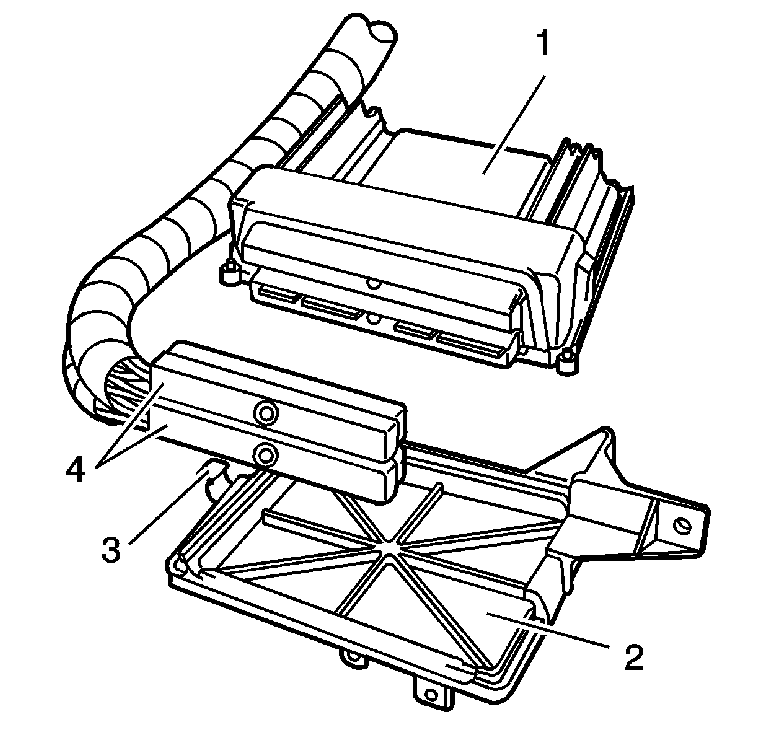Powertrain control module (PCM) service should normally consist of either PCM replacement or EEPROM programming. If the diagnostic procedures require PCM replacement, check the PCM first to see if the correct part is being used.
Important: In order to prevent internal PCM damage, the ignition must be OFF when you disconnect or reconnect the power to the PCM. For example, disconnect the power when you work with the following components:
| • | A battery cable |
| • | The PCM pigtail |
| • | The PCM fuse |
| • | Jumper cables |
Important: When you diagnose or replace the PCM, remove any debris from the PCM connector surfaces before servicing the PCM module connector gaskets. Ensure that the gaskets are installed correctly. The gaskets prevent contamination intrusion into the PCM.
Important:: The replacement PCM MUST be programmed.
Removal Procedure
- Disconnect the PCM harness connectors (4).
- Release the spring latch (3) from the PCM (1).
- Lift the PCM from the PCM mounting tray (2).
- Remove the PCM (1) from the engine compartment.

Notice: Do not touch the connector pins or soldered components on the circuit board in order to prevent possible electrostatic discharge (ESD) damage to the PCM.
Notice: In order to prevent internal damage to the PCM, the ignition must be OFF when disconnecting or reconnecting the PCM connector.

Installation Procedure
- Install the PCM (1) to the PCM mounting tray (2).
- Secure the spring latch (3) to the PCM (1).
- Connect the PCM connectors (4) to the PCM (1).
- Install the air cleaner assembly. Refer to Air Cleaner Assembly Replacement
- If a new PCM is being installed, program the PCM. Refer to Powertrain Control Module Programming .


Notice: Use the correct fastener in the correct location. Replacement fasteners must be the correct part number for that application. Fasteners requiring replacement or fasteners requiring the use of thread locking compound or sealant are identified in the service procedure. Do not use paints, lubricants, or corrosion inhibitors on fasteners or fastener joint surfaces unless specified. These coatings affect fastener torque and joint clamping force and may damage the fastener. Use the correct tightening sequence and specifications when installing fasteners in order to avoid damage to parts and systems.
Tighten
Tighten the PCM connector end fasteners to 8 N·m (70 lb in).
